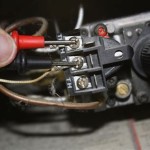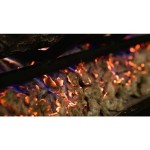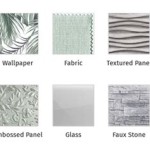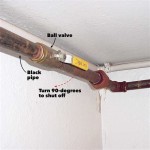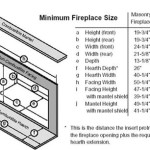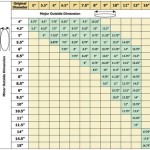Amish Built Electric Fireplaces: Craftsmanship Meets Modern Convenience
The convergence of traditional craftsmanship and modern heating technology is embodied in Amish-built electric fireplaces. These fireplaces represent a unique market segment, offering a blend of aesthetic appeal, quality construction, and energy-efficient heating solutions. They appeal to consumers seeking durable, visually pleasing alternatives to conventional fireplaces or mass-produced electric options. The construction techniques and materials used in Amish-built models often differentiate them from their counterparts, emphasizing longevity and timeless design.
The allure of Amish craftsmanship stems from a commitment to time-tested methods and a resistance to mass-production. Amish artisans are known for their dedication to detail and the use of high-quality materials, resulting in furniture and other goods that are built to last. This philosophy extends to the creation of electric fireplace mantels and surrounds, the primary components of these heating units that benefit from the hand-crafted approach.
While the Amish community generally avoids direct engagement with electricity in their personal lives, they often work with non-Amish individuals and businesses who supply the electric fireplace inserts. This allows for the integration of modern heating technology within the framework of Amish-built cabinetry. The collaboration results in a product that honors traditional values while providing modern functionality.
Superior Quality of Materials and Construction
One of the key distinguishing features of Amish-built electric fireplaces is the superior quality of materials used in their construction. Solid hardwoods, such as oak, cherry, maple, and walnut, are frequently the materials of choice. These hardwoods are selected not only for their aesthetic properties but also for their durability and resistance to wear and tear. Unlike composite materials or veneers commonly found in mass-produced furniture, solid hardwoods offer inherent strength and longevity, contributing to the overall lifespan of the fireplace surround.
The construction process itself is characterized by meticulous attention to detail. Amish artisans typically employ time-honored woodworking techniques, such as mortise and tenon joinery, dovetail joints, and hand-applied finishes. These methods ensure a strong and stable structure that can withstand years of use. The emphasis on handcrafting means that each piece receives individual attention, resulting in a level of quality that is difficult to replicate in a factory setting.
The finishes applied to Amish-built electric fireplaces are also a significant factor in their overall quality. Rather than using fast-drying, mass-produced finishes, Amish artisans often opt for traditional oil-based or varnish finishes. These finishes are applied in multiple layers, with each layer carefully sanded and buffed to create a smooth, rich, and durable surface. The result is a finish that not only enhances the natural beauty of the wood but also protects it from moisture, scratches, and other forms of damage.
Furthermore, the internal structure of the cabinet is often reinforced with solid wood bracing and supports, ensuring that the fireplace surround remains stable and square over time. This attention to structural integrity is crucial for preventing warping or cracking, which can compromise the appearance and functionality of the fireplace.
Aesthetic Design and Customization
Amish-built electric fireplaces are not only functional heating appliances but also serve as decorative focal points in a room. The designs often reflect traditional American styles, such as Shaker, Mission, and Queen Anne, offering a timeless aesthetic that complements a variety of interior design schemes. The clean lines, simple ornamentation, and natural wood tones of these styles create a sense of warmth and elegance.
While many Amish furniture makers offer standard designs, customization options are also frequently available. This allows customers to tailor the fireplace surround to their specific needs and preferences. Customization can include adjustments to the dimensions, wood species, finish color, and hardware. Some manufacturers may also offer the option to incorporate custom carvings or inlays, adding a personal touch to the fireplace.
The ability to choose from a range of wood species is particularly appealing to homeowners who want to match their fireplace to existing furniture or architectural details. Oak, with its prominent grain pattern, offers a classic and durable choice. Cherry, with its rich reddish-brown hue, exudes warmth and sophistication. Maple, with its light color and smooth texture, provides a clean and contemporary look. Walnut, with its dark color and intricate grain pattern, offers a luxurious and elegant option.
The finish color can also be customized to achieve the desired aesthetic. From light and airy natural finishes to dark and dramatic stains, the options are vast. Some manufacturers also offer hand-rubbed finishes that enhance the natural beauty of the wood and create a soft, inviting glow. Furthermore, hardware options, such as knobs, pulls, and hinges, can be selected to complement the overall design of the fireplace. These seemingly small details can make a significant difference in the overall appearance and feel of the finished piece.
Beyond the aesthetic considerations, customization can also address functional needs. For example, a customer may request additional shelving or storage compartments to be incorporated into the fireplace surround. Others may opt for a wider or taller mantel to accommodate larger decorative items.
Integration of Electric Fireplace Inserts
The heating element of an Amish-built electric fireplace is the electric fireplace insert. These inserts are typically manufactured by specialized companies and are then integrated into the handcrafted mantel and surround. The insert provides the functionality of the fireplace, generating heat and simulating the appearance of a real fire.
Electric fireplace inserts offer several advantages over traditional wood-burning fireplaces. They are easy to install, requiring only a standard electrical outlet. They produce heat quickly and efficiently, without the need for wood or gas. They are also relatively safe, as they do not produce smoke, sparks, or open flames. Furthermore, many electric fireplace inserts come with features such as adjustable flame settings, thermostat control, and remote operation.
When selecting an electric fireplace insert for an Amish-built surround, it is crucial to consider the size and design of the insert. The insert must fit properly within the surround and complement its overall aesthetic. Many manufacturers offer a range of insert sizes and styles to accommodate different fireplace designs. It is also important to consider the heating capacity of the insert, ensuring that it is adequate for the size of the room in which it will be used.
The visual realism of the flame effect is another important factor to consider. Modern electric fireplace inserts utilize advanced technologies to simulate the appearance of a real fire. These technologies can include LED lighting, holographic projections, and digital displays. Some inserts even feature a realistic crackling sound to further enhance the ambiance.
The integration of the electric fireplace insert into the Amish-built surround is typically seamless. The insert is designed to slide into a pre-cut opening in the surround, and it is secured in place with screws or brackets. The surround provides a frame for the insert, concealing the mechanical components and creating a finished and polished look.
The longevity and reliability of the electric fireplace insert are also important considerations. Selecting a reputable brand with a proven track record of quality and performance is essential. Many manufacturers offer warranties on their inserts, providing assurance of their durability and reliability.
Consumers should also consider the energy efficiency of the electric fireplace insert. Look for models with energy-saving features, such as adjustable thermostat settings and automatic shut-off timers. These features can help to reduce energy consumption and lower heating costs.
Ultimately, the successful integration of an electric fireplace insert into an Amish-built surround requires careful planning and attention to detail. By selecting a high-quality insert that complements the design of the surround, homeowners can create a beautiful and functional heating appliance that will provide years of enjoyment.

Are Amish Fireplace Claims A Bunch Of Hot Air

Seneca Electric Fireplace With Remote From Dutchcrafters Amish

Roll N Glow Tale Of An Amish Space Heater The New York Times

Home Heat Surge

Qw Amish Valley Fireplace Quality Woods Furniture

Amish Made Electric Fireplaces At Furniture Llc

ᑕ❶ᑐ Amish Fireplace Heaters Why American Made Decor Is Important

10 Questions About Amish Fireplaces Timber To Table

Power Tower Roll N Glo Heat Surge

Odessa Fireplace From Dutchcrafters Amish Furniture


